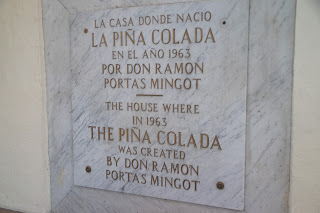 |
| Sample articles from "The San Juan Daily Star" newspaper. |
 |
| Houston Astros rookie Carlos Correa. |
 |
| The first Puerto Rican baseball player, Hiram Bithorn. |
 |
| The entrance to the Hiram Bithorn Stadium in San Juan. |
 |
| My aerial photograph I took upon landing in Puerto Rico. The item in the center is the Hiram Bithorn Stadium. |
I believe the one stadium is the Hiram Bithorn Stadium while the other is the Roberto Clemente Coliseum. What a thrill to see these venues and the importance they hold to the citizens of Puerto Rico. It was another extraordinary day in the life of an ordinary guy. PS - tomorrow I will give you a glimpse into one of the most heroic baseball players, Roberto Clemente.




























































